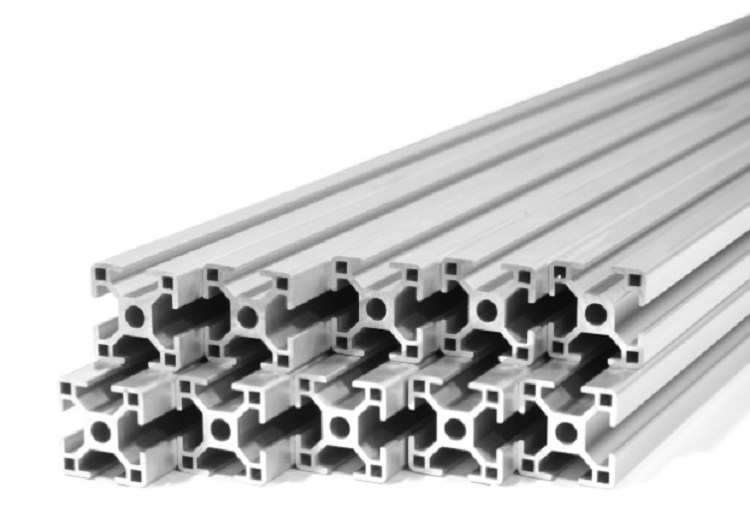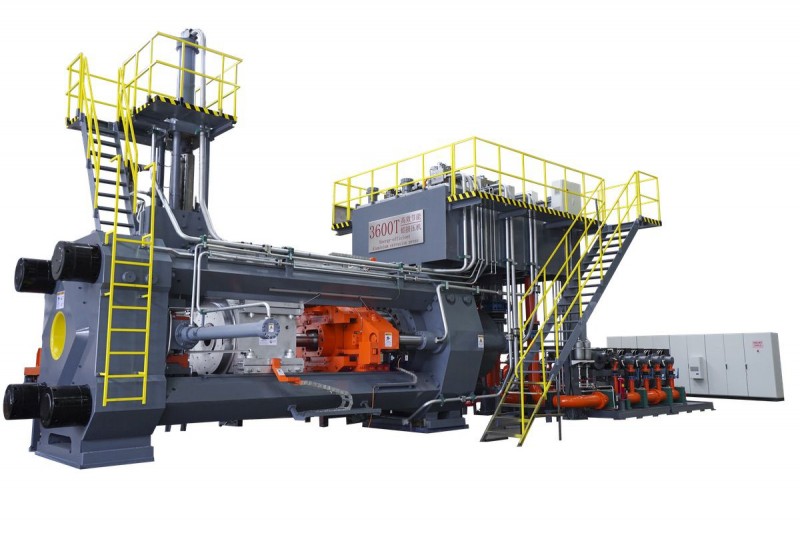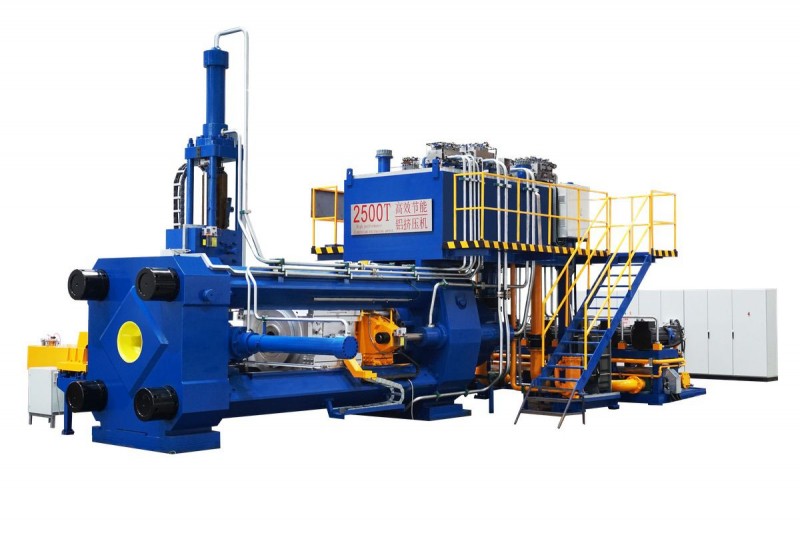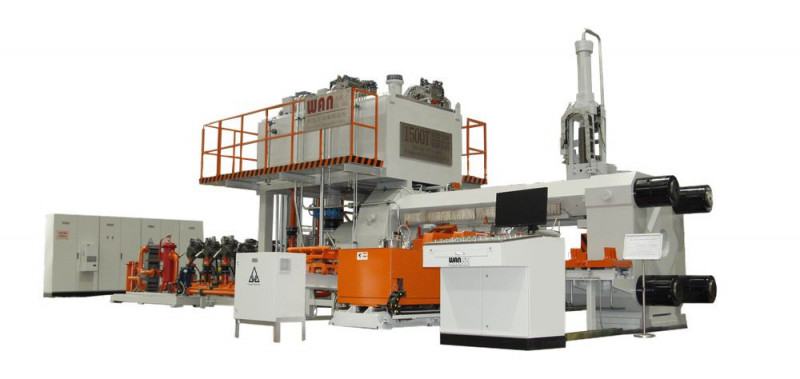Aluminum extrusion is a process that manufacturers apply to have aluminum profiles. This technique involves forcing a solid sheet, bar, or plate of aluminum alloy through an extrusion die. The die has a specific cross-sectional profile, whose shape the finished aluminum profile takes.
Manufacturers utilize an extrusion machine, also referred to as an extruder, for this process. Aluminum profiles are extruded at certain speeds, which depend on various factors such as the type of alloy used and complexity of the profile. Herein is a comprehensive look at everything you need to know about the speed of aluminum extrusion.

Aluminum extrusion speed refers to the rate of outflow of the aluminum profile from the die aperture. It’s denoted as the length (meters) of aluminum profile extruded per minute (meters/minute). The extrusion speed may also refer to the speed at which the extruder’s press ram moves forward. This is because manufacturers control the exit speed of the aluminum profile by adjusting the speed of the machine’s press ram.
Aluminum profiles are extruded at a wide range of speeds generally ranging from 5 meters/minute to 60 meters/minute. Note that some high-capacity lines utilizing easily extruded alloys can manage speeds of up 100 meters/minute. Manufacturers have to carefully consider aluminum extrusion speeds due to several reasons.
Most importantly, it affects the quality of the finished aluminum profile including surface defects and cracks. Also, the speed determines the efficiency of the production process and the amount of wastage.
The main factors that influence extrusion speeds include the type of aluminum alloy, size and quality of the billet (alloy feedstock), and profile shape. Other influencing factors include process conditions, amount of deformation, mold structure, and operating temperatures. Below is an overview of these factors in more detail.
There are different types of aluminum alloys with varying degrees of extrudability. The extrudability of an alloy is the measure of its ease of formability during the extrusion process. It is measured relative to 6063, which is a type of aluminum alloyed with magnesium and silicon.
The commonly used alloy 6063 has an extrudability index of 100. The higher the index the more difficult the alloy is to extrude. In general, alloys with a lower extrusion difficulty can be extruded at faster speeds, and vice versa. Strong alloys with high aluminum content are typically more difficult to extrude.
In regard to extrudability, aluminum alloys are classified into three main groups – soft, medium, and hard alloys. Soft-grade alloys are the easiest to extrude and can be extruded at faster speeds. Common soft-grade alloys include aluminum 6063, 6060, 1050A, and 5005A.
Medium-grade alloys are moderately challenging to extrude. Manufacturers can extrude these types of alloys at moderate speeds. Medium-grade alloys include aluminum 5052, 6061, 6082, and 7020.
High-grade alloys are the most challenging to extrude and the process occurs at relatively slow speeds. Commonly used high-grade aluminum alloys include 5056A, 2024, and 7022.
Manufacturers consider various aspects to determine the quality of the aluminum alloy feedstock or casting billet. These indicators may include metallographic structure, grain size, hydrogen content, and slag particles. Also, a good quality billet doesn’t have cracks, pores, and segregated elements.
Since quality billets have excellent deformation and plasticity, manufacturers can increase the extrusion speed. The reason for this is that there is a reduced force on the outflowing aluminum profile. Poor quality billets require slow extrusion speeds to avoid wastage of material at the die aperture.
The sectional shape and overall size of the finished aluminum profile influences the speed of extrusion considerably. Aluminum profiles with simple geometric shapes, small width-to-thickness ratios, and good symmetry can be extruded at faster speeds. On the other hand, the extrusion speed of the profile with complex shapes, poor symmetry (asymmetrical), and large width-to-thickness ratios will be slower.
There are two main methods used to determine the complexity of sectional profiles. The first method looks at the shape factor, which is a measure of the amount of surface a unit weight of extruded aluminum generates. The shape factor largely affects extrusion speeds and consequently, production rates. Manufacturers use this factor to compare the relative complexities of different sectional profiles.
The second method of determining shape complexity involves a group classification based on extrusion difficulty. The sectional categories are denoted with alphabetical letter from A to N. For example, A and B shapes are simple and shaped bars respectively. D and E shapes are simple solid sections and semi-hollow sections respectively.
M and N shapes are tubes with inner projections and large hollow sections, respectively. The profile shapes increase in complexity further down the alphabetical categories. Extrusion speeds will be slower for profiles with these complex sectional shapes.
Also, smaller aluminum profiles experience uniform deformation along their cross sections. These profiles have lower chances of producing detects. For this reason, manufacturers can increase the extrusion speeds of smaller products. The extruding speed of larger aluminum profiles is typically slower since thick profiles exhibit non-uniform deformation.
Temperature is a crucial parameter in aluminum profile extrusion lines. During the process, the temperature of the metal rises, and therefore its fluidity becomes increasingly non-uniform.
Billets are preheated in furnaces to temperatures between 375° C (700° F) Celsius and 500° C (930° F), depending on the type of aluminum alloy. Heating is done to ensure even flow during the process.
For the casting billet, the temperature rises gradually at the deformation zone in the extruder container as the press ram applies tons of pressure. Each aluminum alloy has a maximum temperature where critical deformation occurs.
At this point, the aluminum will become excessively soft and brittle increasing its chances of having defects like bends, cracks, and dents. Faster extrusion speeds result in higher increases in temperature at the deformation zone. As such, manufacturers have to gradually reduce the extrusion speeds of overheated billets to avoid aluminum profile defects and damage.
Flow stress refers to the resistance of aluminum alloy to continual plastic deformation. It’s the amount of stress required to keep the metal flowing. In extrusion, the flow stress is highly dependent on the composition of the alloy and its temperature.
It is easier to realize faster speeds with aluminum alloys with low flow stress. As flow stress increases, the speed of extrusion reduces. Flow stress is measured in Newton per millimeter squared (N/mm2).
Aluminum alloys with a flow stress less than 30 N/mm2 are considered easy to extrude. Alloys with flow stress between 30 to 45 N/mm2 have moderate extrudability, while those with flow stresses exceeding 45 N/mm2 are the most difficult to extrude.
Aluminum profile manufacturers utilize a variety of mold structures to produce profiles of various complexities or further customize the profiles. For example, manufacturers can use extrusion dies with pins to produce hollow sections within a profile.
Aluminum profiles can be solid, hollow, or a combination of the two (semi-hollow). This depends on the mold structure of the extrusion die. Manufacturers commonly use pocket or feeder dies to extrude solid profiles and porthole die to produce hollow profiles.
Generally, solid extrusion setups offer less resistance during the process compared to hollow setups. Less friction between the aluminum alloy and the working belt of the die means less stress on the surface of the profile. As such, the tendency for defects is reduced, meaning manufacturers can increase the extrusion speed.
With hollow die setups, there is increased resistance and friction between the alloy and the mold’s working belt. This means manufacturers have to reduce the extrusion speed accordingly to avoid profile defects.
Different aluminum alloys and extrusions have varying degrees of deformation. Metals susceptible to a high degree of deformation require significant extrusion pressure or force.
Since it results in an increase in temperature at the deformation zone, the extrusion speed of the profiles will be slower. Conversely, if the extent of deformation is minor, the profile extrusion speed increases due to the uniformity of the metal flow.
Thanks to advances in extrusion technology, manufacturers can increase aluminum extrusion speeds by leveraging various innovative techniques. These techniques include isothermal and liquid nitrogen extrusion.
In the isothermal extrusion method, manufacturers ensure the extruded aluminum section at the die aperture or outlet stays at a constant temperature. During the extrusion process, temperature increases gradually due to friction between the extruder container and the casting billet. The temperature also increases at the deformation zone.
Since the temperature distribution is uneven, it usually limits the speed of the process (to avoid surface defects). Isothermal extrusion tackles this problem by keeping the temperature of the extruded aluminum alloy constant as it undergoes the process. The first step in isothermal extrusion involves gradient heating of the casting billet.
Instead of preheating the whole billet to a specific temperature, manufacturers section it into zones that are heated to different temperatures. As such, there is a temperature difference between the front and back sections of the billet as it is fed into the extruder container.
The temperature gradient along the length of the billet is generally about 0-15° Celsius per 100mm. Alternatively, manufacturers can heat different sections of the container to achieve the same effect.
Gradient heating ensures that each section of the aluminum alloy passes through the die at a consistent temperature. It also helps prevent excessive temperature increase at the deformation zone. Through isothermal extrusion, manufacturers can increase extrusion speeds considerably without increasing the risk of surface defects.
Another method manufacturers use to increase aluminum extrusion speeds leverages the coolant properties of liquid nitrogen. Cold liquid nitrogen helps bypass the problem of temperature increase due to faster extrusion speeds. It’s used to lower the outlet temperature and allow speed increase.
In this method, manufacturers introduce liquid nitrogen to the extrusion die’s working belt. The first effect is that it reduces friction between the aluminum alloy and the working belt. It also reduces the temperatures at the extrusion die and billet deformation zone significantly.
Liquid nitrogen absorbs the heat produced during deformation, allowing manufacturers to increase aluminum extrusion speeds.
At the same time, it controls the temperature of the die exit aperture, helping reduce structural and surface defects on the finished profile. As such, manufacturers not only increase extrusion speeds by utilizing liquid nitrogen but also improve the quality of the finished product.
Ensuring appropriate exit speed is crucial for maintaining the quality of the finished aluminum profile. The most common problems that arise from poor speed control include cracks, waves, pitted surfaces, size changes, and extrusion funnels.
Cracks on aluminum profiles occur when the deformation and extrusion speeds are too fast, resulting in high extrusion temperatures. This affects the continuity of the metal structure, causing breaks along the edge and tail of the profile. Cracks typically manifest as white stripes on the surface of the finished product.
The same conditions above can also cause pitted surfaces due to excessive metal deformation. When this happens, the alloy may bond to the working belt of the extrusion die, producing pitted surfaces. Poor speed control can also cause uneven flow velocity along the length of the die. As a result, waves form on the profile sides that are moving too fast.
Another possible result of poor speed control is an extrusion funnel. As the extrusion speed increases, so does the possibility of uneven metal flow along the direction of the process. As such, dirt present on the surface of the casting billet can find its way into the interior of the aluminum profile, creating an extrusion funnel.
Overall, extrusion speed is one of the most important parameters manufacturers consider in aluminum profile production lines. It influences production rates as well as the quality and economics of aluminum profile production processes.
Manufactures carefully control extrusion speeds according to various factors, including type of alloy, profile shapes, working temperatures, and die setups. They also leverage new technology to improve production efficiency and ensure high-quality finished products.
Wangeshi is one of the leading manufacturers of high-efficiency aluminum extrusion machines. We offer innovative line manufacturing solutions for aluminum profile manufacturers worldwide. Always striving for excellence, Wangeshi banks on 20 years of industry experience, technical expertise, and advanced equipment to develop top-level aluminum machinery. Contact our team of experts today for requests or information about our products.


